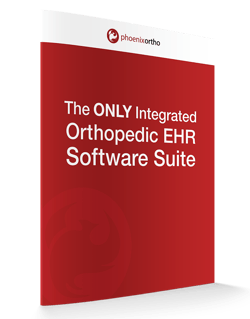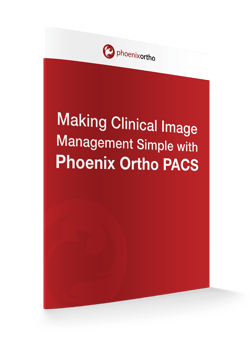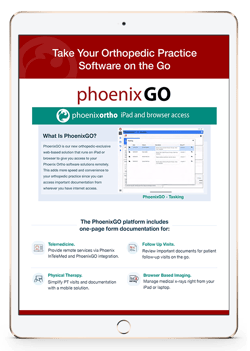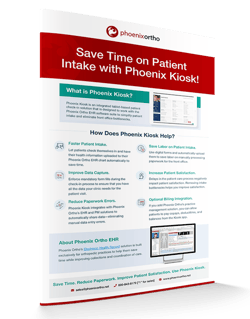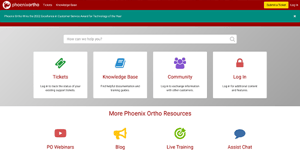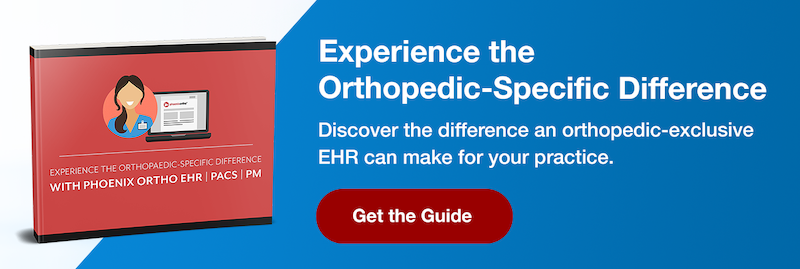Payment collection is a key issue for any healthcare facility. However, a major part of effectively collecting payment for medical services is applying the appropriate Evaluation and Management (Office Visit) medical billing codes for each patient visit.
Inputting the wrong medical billing codes on a charge submission for a patient visit can lead to numerous problems—not the least of which is a medical billing code audit. The question is: “how can orthopaedic practices avoid medical billing code mistakes that lead to audits?”
The Cost of a Medical Billing Code Audit
As noted in an article by For the Record, “coding audits can be retrospective, which is a review of submitted claims, or prospective, an analysis of prebilled claims.” For this article, we will focus on preventing retrospective medical billing code audits because of how they disrupt a clinic’s accounts receivable (and, thus, the clinic’s cash flow and ability to keep its doors open).
Most coding audits are carried out by the clinic (or by a medical billing code specialist contracted for the purpose) to identify and prevent potential billing code mistakes that may impact patients/payers. The costs of these voluntary self-audits are usually minimal and generally include the time of the auditor and covering the costs of any mistakes that get identified.
In rarer cases, an outside party may need to audit the practice’s application of billing codes to patient visits. This may happen due to a dispute of charges made during the payment collection process or some other compliance issue in the clinic’s billing practices.
Such outside audits can be disruptive to an orthopaedic clinic, and the bad publicity from billing code mistakes highlighted during such audits can drive away potential business. So, it’s important to avoid mistakes in payment collection.
What Affects the Medical Billing Codes a Clinic May Apply?
The challenge is that clinics may have to follow a number of different guidelines for assigning billing codes depending on a few different factors, including:
- Who the Payer Is. Different insurance providers may have unique requirements when inputting billing codes for a patient visit. Some large payers such as Medicare/Medicaid may handle billing requests directly, while insurers may require the payments to be processed via a clearinghouse.
- The Nature of the Visit. Is the visit a simple check-up, a follow-up to a previous diagnosis/treatment, or an initial visit for an injury? Which specialists did the patient have to see?
- How Much Information is Collected. The more information a doctor collects from a patient during a visit, the more likely it is that they’ll be able to apply a more valuable billing code to the visit.
- Current Regulations. Because billing codes may change periodically, codes that once applied to a given combination of procedures in the past may not be applicable in the future.
How Can Orthopaedic Clinics Avoid Medical Billing Code Mistakes?
Many clinics rely on professional billing code services to identify the best medical billing codes for the Evaluation and Management (Office Visit, or E & M) Code to apply to a given patient visit. The sheer number of variables often demands the services of a specialist to avoid mistakes that lead to reduced revenues or increased audit risks. Providers are as much at risk for under-coding as over-coding when it comes to the E & M Office Billing Code. The drawback of this is that hiring an internal expert is expensive and outsourcing the work can create delays in the payment collection process.
However, there is another way for an orthopaedic clinic to prevent medical billing code mistakes, and even find ways to improve the billing codes they can apply: The Phoenix Ortho Electronic Health Record (EHR) solution.
Phoenix Ortho’s EHR solution allows orthopaedic doctors, nurses, and assistants to log details about a patient visit in the software, create a detailed report of the patient visit, and store medical imaging data. Better yet, the Phoenix Ortho EHR software tracks all of the activity from a patient’s visit captured on the Exam Form and selected procedures provided in the visit. It uses that data to automatically produce the charge ticket and to suggest the E & M medical billing code.
In the charge submission field, users can check the current Evaluation and Management medical billing code from the documentation entered during the visit, verify the risk level of the current code, and provide a code audit form for the work performed on that code level. This code audit form is an indicator of what may be missing in your documentation, causing a lower E & M medical billing code to be calculated. All three areas of work production are tracked:
- Exam Level;
- History Level; and
- Portions of the Medical Decision Making.
The Phoenix Ortho EHR solution also supports real-time charge capture to help ensure that the clinic’s cash flow is as healthy as possible.
Want to know more about how Phoenix Ortho’s medical billing code system works? Reach out to our team today to get the specifics of our automated billing code solution.
Schedule a 1:1
Get in touch with Phoenix Ortho to learn more about how you can save time, money, and mouse clicks with an orthopedic-specific EHR.





